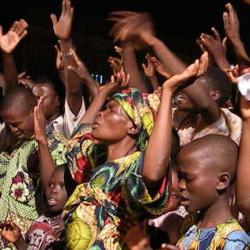Teaching and learning never take place in no-place. They are always in an environment. The issue is always which environment and whether it is coherent with what is taught or at cross-purposes with content.
Attention to the teaching environment may sound trendily modern, but it’s ancient wisdom. Deuteronomy 6 records Yahweh’s teaching to Israel to be teachers to their children. Yahweh’s teaching bridges the ontological gap between Creator and creature; the teaching that He teaches Israel to teach bridges the temporal gap between generations: “Teach [My words] diligently to your sons.” This is accomplished by a form of total immersion: Teach “when you sit in your house and when you walk by the way and when you lie down and when you rise up” (6:7). In this sense, the environment of teaching is teaching. Teachers create an environment of words for the words they teach.
Not only an environment of words, but a physical environment that speaks: “you shall bind them as a sign on your hand and they shall be as frontals on your forehead. And you shall write them on the doorposts of your house and on your gates” (vv. 8-9). Wherever the student turns his ears, he hears the words of Yahweh; wherever he turns his eyes, he sees the words of Yahweh.
In other texts, those signs and frontals aren’t part of the physical environment but form a ritual environment. The feast of unleavened bread is “a sign on your hand, and a memorial on your forehead” (Exodus 13:9, 16). What serves as memorial isn’t an object or inscription, but a repeated set of actions. Ritual provides a setting within which words are memorized and memorialized. A school day that begins with the pledge of allegiance is setting a trajectory for education (construction of little Deweyan democrats) different from a school day opened with Matins.
Ritual environment, and symbolic environment. You have to set up the classroom in one way or another. The teacher and students have to be wearing something, or nothing – in either case, the symbolics set the setting for the content of teaching. The teacher has to adopt a position and posture. Jesus wasn’t just looking for a convenient comfortable place to teach when he climbed a mountain and sat down (Matthew 5). He was establishing a symbolic environment: Jesus as enthroned teacher, Jesus as Yahweh on the mountain, teaching with authority and not as the scribes. Jesus knew what He was doing when He took over the temple and turned it into a place of healing and instruction (Matthew 21): He was turning the den of brigands back into a house of prayer for the nations.















